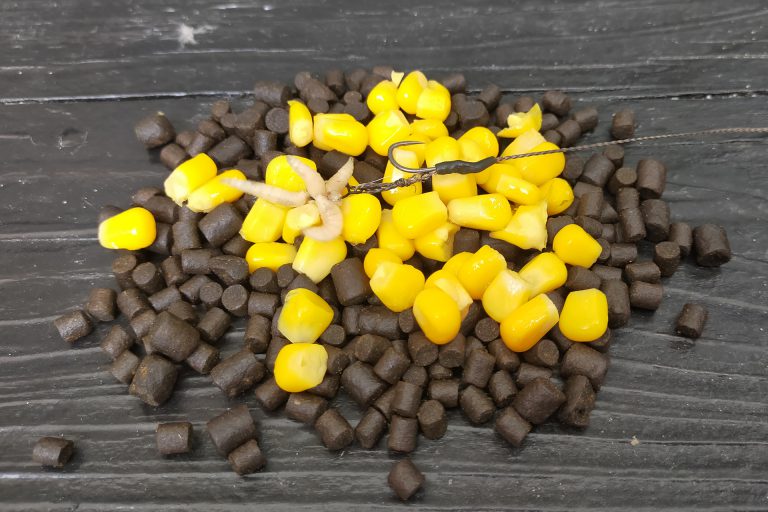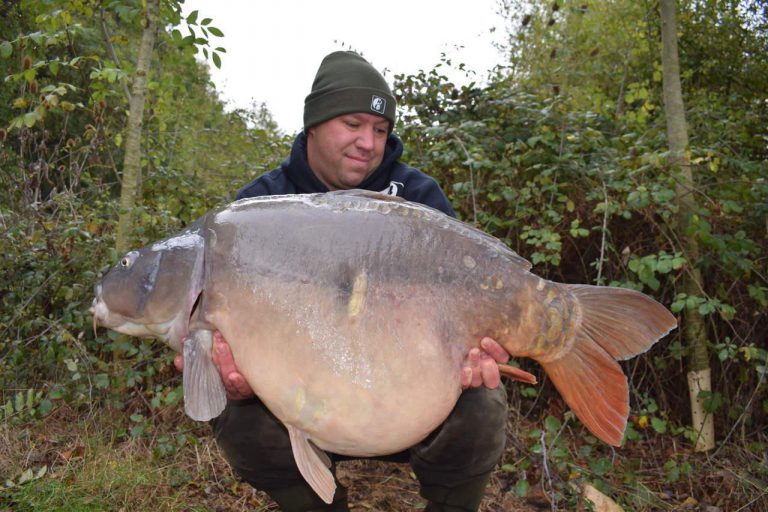Carp fishing on running water is quite a challenge. There are quite a few things to take into account. Just throwing out your lines and waiting for fish does not work in this situation. In flowing water it is not only a challenge to catch the fish, but also to keep your lines well on the bottom. Think of boats or the water and dirt that can carry your line. In this blog I will show you how best to fish on flowing water and I have created a handy tool against floating debris, with work instructions so you can get started yourself.
Keeping the lines in place
I myself have been fishing here for years on a canal that can flow quite a bit. At the end of this water there are three pumps and a lock. That is quite a force when these turn on. And what makes fishing not easy. But it does provide an extra nice challenge. On flowing water you can’t fish with the lines out of the water because here also shipping comes along. So you have to fish with the lines over the bottom. I will explain to you how I keep everything in place on a flowing canal.
On my main line I use 200 grams of grip lead. To run the line further over the bottom I use double top lead and 20 grams of lead over the main line. This goes into the fairway. This way your line is well pressed to the bottom. The second top lead 115 grams with line clip goes as close to the shore as possible. When you have a take it will shoot off your line. This way you always drill with top lead.
Addressing drift and false squeaks
The above way makes it a lot easier to catch your fish, but it gave me another challenge. Drift debris! It was flowing along the shore and causing false squeaks. Now it’s manageable during the day and also because I already lower the lines under the shore quite short.
You can get it out with a scoop net during the day before it hits your lines. But sometimes there is a lot of weed or islands of reeds. At night, it gets trickier. All those false squeaks keep you from sleeping unnecessarily. Your line gets lifted out of the water with top lead and all. To prevent this, I made some kind of board that serves as a blocker to keep that drifting debris out of my lines.

This is what you need to make your own flotation blocker
- Mutiplex sheet 20×70 cm 3 mm thick
- 3 pieces of round hardwood diameter 26 mm one of 70 cm, 80 and 100 cm
- Lock bolt M8 8 cm long
- 2 nuts

Here’s how to make it
- Rout a slot of 33 mm in the length of the spars of 70 and 100 cm
- Drill an 8 mm hole in the 100 cm spar at 40 cm
- Insert the 8 mm bolt here
- Make a notch in the sheet of plywood, falling over the bolt to glue the plywood into the slot of the 100 cm and the other can into that of the 70 cm pole
- Once that is secure drill an 8 mm hole in the 80 cm long stick, almost at the end
- Now you can put it over the bolt and secure it with the nuts.
- To attach it to the waterfront, drill a hole at both ends of the round sticks through which the banck sticks will fit
- Paint it afterwards to protect the wood, I chose black, but green is of course also fine. Just whatever you have left over that doesn’t stand out too much in nature.

You can make this board as you like and, of course, it can be well adapted to the situation of the waterfront where you fish.
Good luck on the waterfront!
Marcel Dolderman



